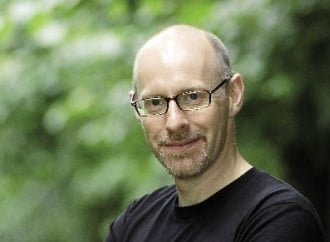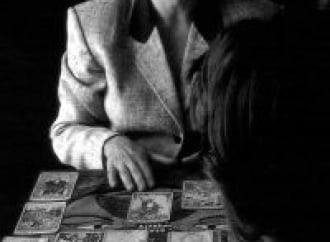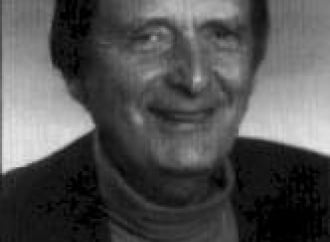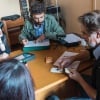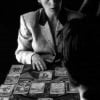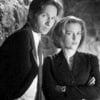In Italy CICAP, the Italian Committee for the Investigation of Claims on the Paranormal, is now very well known to the public thanks to the many TV appearences of its members. As a consequence to this, we are frequently approached by people who claim to possess psychic powers and want to be tested by us.
Very rarely the psychics who visit us at the University of Pavia are deliberate frauds. Usually, we meet a lot of sincere people that really think they possess paranormal powers just because they have never properly tested their claims; this has been the case, for example, of the lady who "impressed images on film", of the man who "changed the taste of wine", of the one that "moved the clouds" or of the other who "was immune to acids". In all of these cases, after submitting the claims to scrutiny, we were able to find out normal explanations for the phenomena.
A tipical case: the lady and the boxes
Some times ago, we did receive a letter by a lady, R. G., who said she could see inside a sealed box and could describe what objects were inside it; she wanted CICAP to test and verify her powers.
We accepted her proposale and invited R. G. to the University of Pavia were, with the help of collegues like dott. Luigi Garlaschelli and prof. Adalberto Piazzoli, we usually test psychics.
In letters and via telephone she had explained to us that we could use any kind of box and any object we liked; she claimed a 60-70% rate of success.
Once in Pavia, she agreed that the situation was ideal, that the people there was not hostile and that she was confident she would succeed.
We read her the protocol we had prepared for the test, to which again she agreed.
The test
We had previously selected 12 objects, each one different from the others in shape, color and material; these objects were to be taken in a different room from the one where the test was going to take place and randomly numbered from 1 to 12. During the test, an experimenter would choose a random number, then take the corresponding object, wrap it up in paper, to avoid any clue by noise (the psychic said beforehand that paper didn't block her visions), put it in a wooden box, kept close by two rubber bands, and then bring it in view of the lady. This would happen for each object, and each object could be chosen only once.
At this point, when she saw the box for the first time, the lady asked to take off the rubber bands around it, because they could confuse her images. We accepted on condition that nobody could get close to the box after the experimenter had entered the room.
We then gave R. G. a list of the 12 objects to help her remember what to look for. We explained her that she had to concentrate on the box and then indicate on the list the object that could better match her visions. If she wished, she could change her mind and switch one guess for another before the end of the test. The correct answer for every guess would be given only at the end of the session.
Obviously, the person who did place the objects in the box was kept away from the lady so as to avoid any involountary non verbal communication.
As usual, we did videotape the whole test.
«I see something squared...»
R. G., sitting six feets away from the box, with her husband beside her, would concentrate for a few seconds and then give her perceptions: «I see something squared... a bit thick... something dark... straight...»; having to choose an object on the list, she pointed, in this case, to the rubber stamp.
The test went on until the last object was reached: «It's something rigid», said R. G., «straight... not a cube... has only one colour... looks like a pen, a tube... could be the key».
At the end of the test, we took the list with the order in which the object were presented to the lady and proceeded to compare it with her guesses. Out of 12 objects, she had got 1: exactly what one would expect by chance1.
R. G. tried to justify her unsuccesful performance by saying that the conditions (to which she had agreed before the start of the test) were not her usual and then tried to accomodate her descripitions to the objects actually presented. For example, the object she had indicated to be the "key", turned out to be a "mirror". «Well, I was right after all», she said. «it was something straight, not a cube and only had one colour...»; the lady seemed to have forgotten that she had also said that the object looked like: «a pen, a tube».
An informal trial
We had designed our protocol on the basis of what she said she could do and in which conditions and we had tried to accomodate to her needs; however, she insisted that this was not the procedure she was used at home. Usually, she said, she needed two series of objects: one for the test, the other to be kept in front of her so that she could compare her visions with a replica of the actual object and not with a word on a list.
Even if we considered the test over, we agreed to perform an informal trial after we found out 12 double objects in the laboratory. We proceeded then as before and, as before, the result was clear: 1 hit on 12 trials.
R. G. wasn't still convinced, and repeated that at home she would usually get 6, 7 objects out of 10 and indicated two more differences with our test: at home, her husband could use the same object more than once, and this gave her more freedom of choice; furthermore, she needed some encouragement, so she needed to know if she was right or wrong immediately after her guess.
Some of us were against performing a new test and changing again the protocol; however, after clearly stating that the test was not to be considered a scientific test and that it was only done as another informal trial, in view of future tests, we accepted to try.
Since this demonstration proved to be very quick to prepare, we did 28 trials with a choice of the same 7 objects for each trial; R. G. was right in 6 cases. Even this demonstration was not considered to be significant2.
At the end of our meeting, we suggested R. G. to try to repeat at home the test as we had performed it that day; in this way, in fact, she could have maybe realized that, once the possibility of adapting one's «visions» to the correct object in the box is ruled out, the results can only be random (unless she really possessed real psychic powers, that is).
We invited her back if, following this procedure, she could still obtain a 60/70% rate of success.
A few years have now passed, but we haven't heard from her yet.
Notes
| 1 | This procedure corresponds to the one used by Susan Blackmore for a test on an english psychic (J.S.P.R., 60, n. 840, July 1995). |
| 2 | According to literature (e.g. M. Ryzl, ESP Experiments which succeed, ch. |
Massimo Polidoro is the Director of research for CICAP (the Italian Committee for the Investigations of Claims of the Paranormal), European representative to the JREF, magician, author of various books dealing with critical examination of paranormal claims and a graduate student in psychology at Padua University, e-mail: [email protected] .


